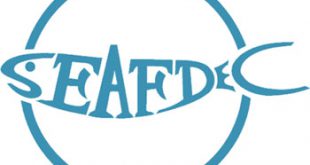SaaS has increasingly become an everyday part of how business is done across the globe; according to Statista, the global SaaS market is forecast to reach 157 billion US dollars in size by 2020, more than doubling 2014 figures.
This enormous growth reflects the extent to which SaaS is empowering organizations to do business better, helping businesses to achieve always-on flexibility, agility and scalability, increasing ROI on IT spend while freeing up valuable resources to focus on long-term strategy.
Software-as-a-Service (SaaS) refers to software which is owned, delivered and managed remotely; rather than purchasing software packages, organizations pay for their usage of a cloud-based package, whether on a pay-for-use or subscription model.
This has proven very appealing to the market; this streamlined method of delivery means that rather than purchasing and owning software that can quickly become outdated, clients can use what they need, scale or shrink their usage as they need to.
Furthermore, software-as-service vendors can innovate more quickly by saving on the valuable time spent on maintaining numerous individual clients, creating win-wins for vendors and clients alike.
Freed from the information technology overheads of deploying systems, implementation teams can concentrate on new behaviours and long-term embedding strategies.
Some SaaS systems that can be useful for business needs include management operating systems, human capital management systems and evidence-based decision-making tools.
Sourcing these resources through software-as-a-service provides the flexibility and scalability to address specific business needs, budgets and available resources.
SaaS also helps to achieve associated behaviour changes in the business by fostering a culture of innovation, agility, with systems always-on and accessible anywhere. These is how an operational excellence breakdown happens.
The shift from deploying and maintaining software to focusing on the business is often an unexpected benefit of software-as-a-service.
As part of this shift, leading-edge software-as-a-service providers combine substantial business-oriented services with their offering – a one-stop-shop “whole package” that can be divided into only the parts necessary, customized to the unique needs of a diverse business.
Such services may include various forms of training and a range of consulting and support options.
There are several actions that should be taken in order to maximise the benefits gleaned from this bundle of software-as-a-service and business-focused assistance.
Three of these are explored below:
Empower individuals through information-sharingForbes recently observed that employees with clear expectations and tools to do their work are the most engaged and demonstrate high rates of job satisfaction.
Achieving this outcome is most likely when organisations correctly implement these kinds of information tools.
Your organisation can work towards this by encouraging a culture of transparency, which in turn has been shown to lead to improved employee engagement.
Instead of focusing on precise numbers – which can often lead to inappropriate behaviours – encourage individuals to focus on the stories behind these numbers, thus building buy-in.
An experienced implementation team can help with this, while an experienced follow-up team can ensure this attitude remains embedded.
The same information should be shared across all parts of the organisation.
Everybody will become aware that the effect of their behaviour and actions penetrates deeply into the fabric of the organisation.
Be a hands-on sponsorThis type of service offering can provide significant benefits but don’t overlook what is required to make your organisation successful.
Setting the strategic direction, choosing tools and handing out a communication plan will not in itself ensure success.
Participate in daily and weekly meetings.
Ask questions of leaders and team members about their plans and results.
Follow up on barriers to success and identified waste items.
Remember, even with the best tools, the human element is crucial – too many a SaaS adoption project has failed because people simply don’t understand the “why” and resist change.
Take a long-term view and plan for sustainabilityLook for technology combined with consulting services on a long-term basis to drive business transformation, service improvement, happier employees and cost savings.
Look both to the software part of a software-as-a-service offering, and also at the regular refreshing of behaviours through personalised service.
This involves making a multi-year plan to embed the appropriate methodologies and behavioural changes deeply into the fabric of the organisation.
The risk otherwise is that while the metrics stay in place, the newly acquired behaviours begin to unravel as soon as the project is completed and the managerial spotlight turns elsewhere.
This eventually leads to stagnation or even regression of performance.
 SEAFDEC/AQD Southeast Asian Fisheries Development Center | Aquaculture Department
SEAFDEC/AQD Southeast Asian Fisheries Development Center | Aquaculture Department



